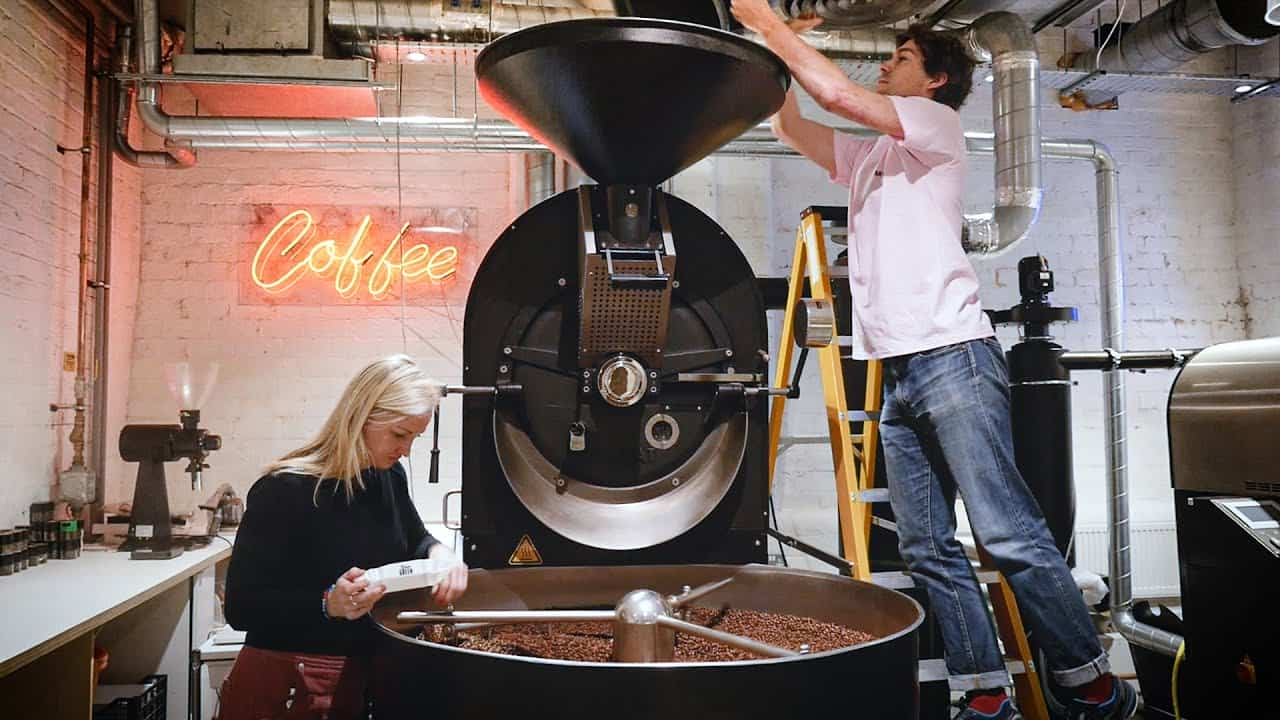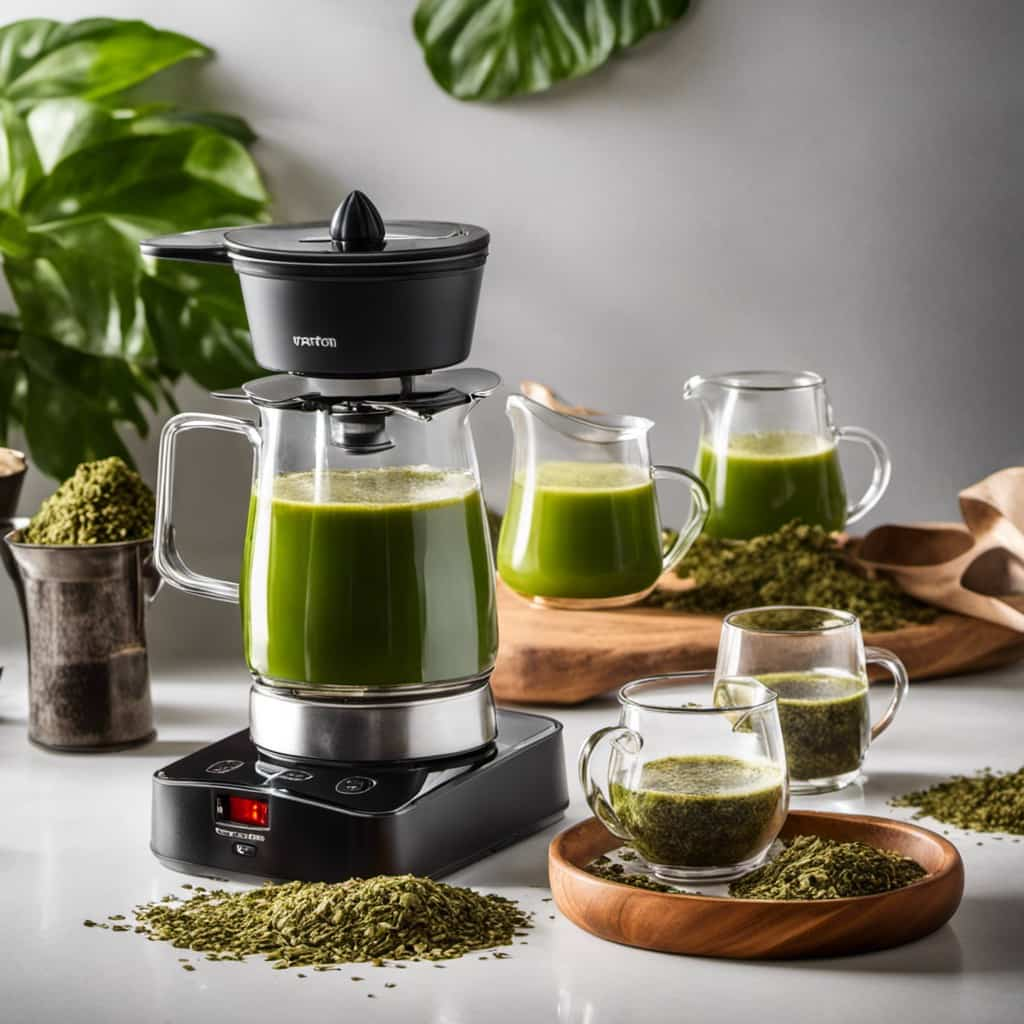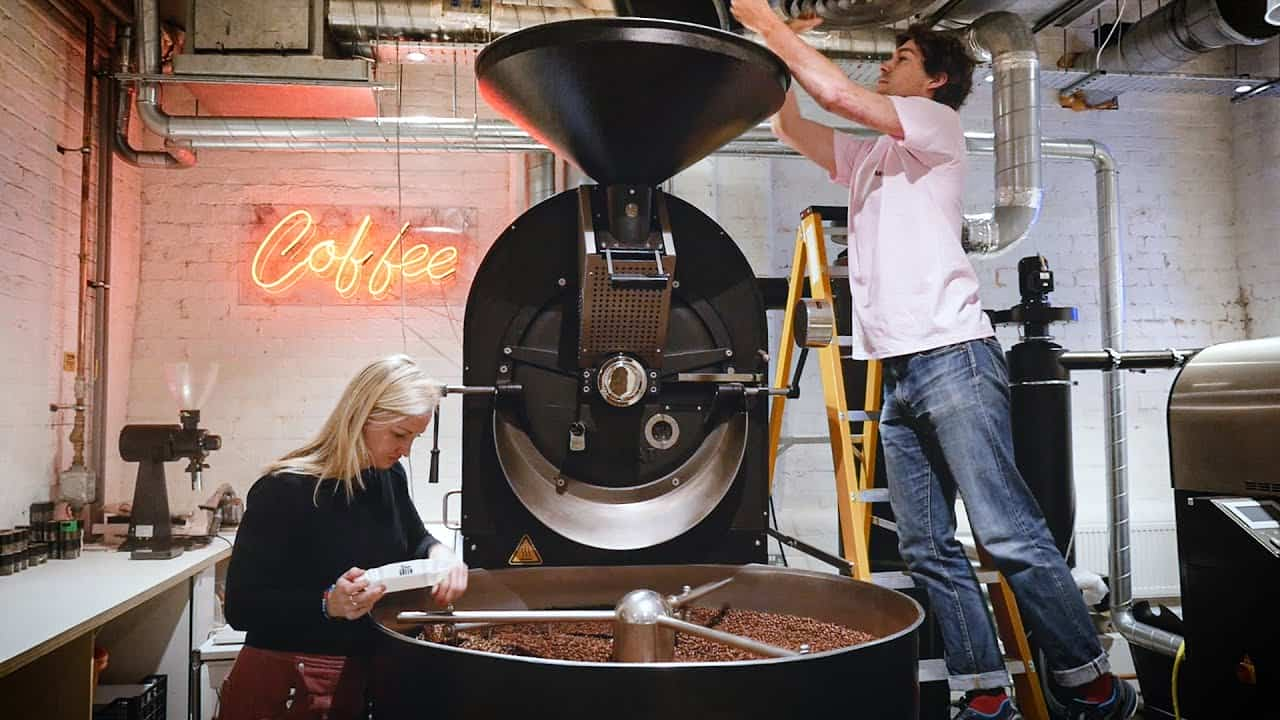Coffee Basics
Condensed Milk In Coffee: The Best Add-In You Need To Try!
As a coffee aficionado, I am constantly searching for new ingredients to elevate my morning caffeine fix. Discovering condensed milk has truly revolutionized my coffee routine!
This sweet and creamy ingredient not only adds depth to your coffee but also brings a whole new level of indulgence to your morning routine. Condensed milk is made by removing water from regular milk and adding sugar, resulting in a thick and syrupy consistency that’s perfect for adding to coffee.
But it’s not just the texture that makes this add-in so special its unique flavor profile blends perfectly with various types of coffee, creating a truly decadent experience. In this article, I’ll explore everything you need to know about using condensed milk in your coffee: from how it works to its health considerations, recipe ideas, cultural significance, and more.
So sit back, grab your favorite mug, and let’s dive into the world of condensed milk and coffee!
Key Takeaways
- Using condensed milk in coffee adds a creamy and velvety texture without watering down the coffee, and it also provides a unique level of sweetness that balances out any bitterness or acidity in the beans.
- Medium to dark roasts work best with condensed milk because they have a bolder taste that can balance out the sweetness.
- Homemade condensed milk allows you to control the sweetness level and opens up endless opportunities for flavor variations.
- Condensed milk has become an indispensable ingredient in many cultures around the world, and it is not only used in coffee but also in desserts and savory dishes.
What is Condensed Milk and How it Works in Coffee?
You’re missing out on the creamy goodness of condensed milk in your coffee – let me tell you how it works!
Condensed milk is a thick, sweetened milk that’s been cooked down to remove most of its water content. It’s commonly used in cooking and baking, but it also makes for a delicious add-in to your morning cup of joe.
One of the benefits of using condensed milk in desserts is that it adds sweetness and richness without changing the texture. This same principle applies when adding condensed milk to coffee – it adds a creamy, velvety texture without watering down the coffee like regular milk would. Plus, since condensed milk is already sweetened, there’s no need to add any extra sugar!
Using condensed milk in cooking also means that you can keep it on hand for longer periods of time without worrying about spoilage. Its long shelf life makes it a convenient option for those who don’t always have fresh dairy products on hand.
And if you’re looking for a way to switch up your morning routine, adding condensed milk to your coffee can be just the change you need! Trust me – once you try it, you won’t go back to plain old creamer or sugar.
Advantages of Adding Condensed Milk to Your Coffee
Indulging in this creamy and sweet addition will elevate your morning cup of joe to a whole new level. Adding condensed milk to coffee is an absolute game-changer. The flavor profile is unmatched, as the condensed milk brings out the natural sweetness of coffee while also adding a rich creaminess that can’t be achieved with regular milk or creamer.
Not only does condensed milk enhance the taste of coffee, but it also adds a unique level of sweetness that can satisfy any sweet tooth. This means you won’t need to add any extra sugar or artificial sweeteners to your coffee – just a small amount of condensed milk does the trick. The added sweetness creates a well-balanced cup of coffee that’s perfect for anyone looking for something more indulgent than plain black coffee.
Overall, there are so many advantages to adding condensed milk to your daily cup of joe. From enhancing the flavor profile to satisfying your cravings for something sweet, it’s no wonder why so many people have fallen in love with this delicious addition.
In the next section, we’ll explore some types of coffee that pair perfectly with condensed milk – get ready!
Types of Coffee That Pair Well with Condensed Milk
Who knew that certain types of java could perfectly complement a creamy, sweet addition like condensed milk? Coffee flavor profiles and regional variations play a significant role in determining which coffee blends pair well with condensed milk.
For instance, medium to dark roasts tend to work best with this add-in because they have a bolder taste that balances out the sweetness of the condensed milk. On the other hand, lighter roasts may not be as ideal for adding condensed milk since they have more delicate flavors that can become overpowered by the sweetness.
Additionally, alternative sweeteners or substitutes such as honey or agave syrup can also affect how well your coffee pairs with condensed milk. It’s essential to experiment with different blends until you find one that complements both your taste buds and preferences.
If you’re looking for an excellent starting point in pairing your coffee with condensed milk, try Vietnamese-style coffee. This type of brew is traditionally served with sweetened condensed milk and has a robust flavor profile that stands up well against the creaminess of the added ingredient.
With so many options available, there are endless possibilities when it comes to enjoying this delicious combination. As you’ve learned about which types of coffee blend well with condensed milk, why not try making your own version at home?
There are various recipes online that use simple ingredients like sugar and whole milk to create a homemade version of this beloved ingredient. By experimenting with different methods for making your own batch of creamy goodness, you’ll be able to enjoy your favorite beverage without having to venture out to buy expensive store-bought versions again!
How to Make Your Own Condensed Milk at Home
Imagine the satisfaction of creating your own creamy, sweet ingredient to elevate your coffee game to the next level. With a homemade recipe for condensed milk, it’s possible!
Not only does making your own condensed milk allow you to control the ingredients and sweetness level, but it also opens up endless opportunities for flavor variations.
To make homemade condensed milk, all you need is whole milk and sugar. Simply combine the two in a saucepan over low heat and stir until the sugar dissolves. Increase the heat and bring the mixture to a boil, then reduce to a simmer and let it cook for about an hour or until it thickens into a creamy consistency.
From there, you can experiment with different flavorings such as vanilla extract or even cocoa powder for a chocolate twist. Another way to switch up your homemade condensed milk is by using alternative sweeteners like honey or maple syrup instead of traditional granulated sugar. You could even try substituting coconut milk for dairy milk for a vegan option.
The possibilities are endless!
Now that you have your own personalized condensed milk recipe, it’s time to put it to use in some simple condensed milk coffee recipes to try.
Simple Condensed Milk Coffee Recipes to Try
Get ready to elevate your morning routine with these simple and delicious coffee recipes that are sure to impress. Adding condensed milk to your coffee is a great way to enhance its flavor and creaminess. With just a few variations, you can turn an ordinary cup of coffee into something extraordinary.
Check out this table for some inspiration on different ways to incorporate condensed milk into your coffee:
| Flavor Variations | Brewing Techniques |
|---|---|
| Vietnamese Iced Coffee | Brewed Coffee |
| Caramel Macchiato | Espresso |
| Coconut Latte | French Press |
For a Vietnamese iced coffee, simply brew strong coffee and mix it with condensed milk and ice. To make a caramel macchiato, froth some milk and pour it over espresso mixed with condensed milk. And for a coconut latte, use a French press to steep coconut flakes in hot water before adding brewed coffee and condensed milk.
These recipes are easy to make at home and will add new dimensions of flavor to your daily cup of joe. Now that we’ve covered some tasty recipes, let’s move on to tips for using condensed milk in your coffee without compromising taste or texture.
Tips for Using Condensed Milk in Your Coffee
If you want to take your morning coffee to the next level, incorporating a touch of sweetness with a creamy texture is like adding a cozy sweater to your favorite outfit. Using condensed milk in your coffee can achieve just that! But how do you use it effectively without overpowering the taste of your coffee?
Firstly, consider different flavor combinations. Condensed milk has a distinct sweetness and caramel-like flavor that pairs well with bold coffee flavors such as espresso or dark roast. You can also add spices like cinnamon or nutmeg for an added depth of flavor.
Secondly, brewing techniques matter too. To prevent curdling, it’s best to add condensed milk after brewing rather than during the process. Whisk the milk with hot water until smooth before adding it to your coffee cup.
Incorporating condensed milk into your daily brew not only enhances its taste but also provides an indulgent experience. However, consider moderation as this sweet treat may contain high levels of sugar and calories.
In the next section, we’ll explore health considerations when using condensed milk in your coffee.
Health Considerations of Using Condensed Milk in Coffee
When it comes to your health, it’s important to be mindful of how much condensed milk you’re using in your morning brew. While condensed milk can add a deliciously sweet and creamy flavor to your coffee, it also has a significant caloric impact. In fact, just one tablespoon of condensed milk contains around 40 calories and 2 grams of fat.
For those who are lactose intolerant, using condensed milk in their coffee may not be the best choice. Condensed milk is made by heating up regular milk and adding sugar until most of the water content evaporates. This process results in a more concentrated form of lactose, which can be harder for some people with lactose intolerance to digest.
To help put things into perspective, take a look at the following table:
| Amount | Calories | Fat |
|---|---|---|
| 1 tbsp | 40 | 2g |
| 2 tbsp | 80 | 4g |
| 3 tbsp | 120 | 6g |
As you can see from the table above, even just a few tablespoons of condensed milk can quickly add up in terms of calories and fat. If you’re looking for a healthier alternative, consider swapping out traditional dairy products with non-dairy options such as almond or oat milk.
While adding condensed milk to your coffee can certainly enhance its flavor profile, it’s important to be aware of its caloric impact and potential effects on those with lactose intolerance. However, fear not! There are plenty of other creative ways to use condensed milk in your recipes that don’t involve drinking it straight from the can.
Other Creative Ways to Use Condensed Milk in Your Recipes
While condensed milk in coffee may not be the healthiest option out there, it definitely adds a unique flavor and creaminess to your morning cup of joe. However, if you’re looking for other ways to use condensed milk in your recipes, there are plenty of creative options that can satisfy your sweet tooth or savory cravings.
One popular way to incorporate condensed milk into desserts is by making fudge. By mixing together chocolate chips, butter, and sweetened condensed milk over low heat until smooth and thickened, you can create a decadent treat that’s perfect for any occasion. You can also use condensed milk as a base for ice cream or as a topping for pancakes and waffles.
But don’t let the name fool you – condensed milk can also be used in savory dishes! For example, you can create a creamy sauce by combining it with garlic and parmesan cheese for pasta dishes. Or try using it as a marinade for meats like chicken or pork to add sweetness and tenderness. The possibilities are endless when it comes to incorporating this versatile ingredient into your cooking.
As someone who loves experimenting with new flavors and ingredients in the kitchen, I’m always excited to try different ways of using condensed milk in my recipes. From indulgent desserts to unexpected savory dishes, this ingredient adds richness and depth that takes any dish up a notch.
But now, let’s explore how the cultural significance of adding condensed milk to coffee has evolved over time.
Exploring the Cultural Significance of Condensed Milk in Coffee
Delving into the history of condensed milk’s incorporation into coffee culture is like discovering a hidden gem, unlocking the richness and depth of a tradition that has been passed down through generations. The cultural significance of condensed milk in coffee is unparalleled. It has become an essential component in many cultures around the world, adding a unique and distinct flavor to their beloved beverage.
In Vietnam, for example, condensed milk is added to strong dark coffee to create ca phe sua da, a sweet and creamy drink that perfectly balances out the bitterness of the coffee. This combination has become so ingrained in Vietnamese culture that it is now considered a national treasure. Similarly, in Thailand, iced coffee with condensed milk or "Oliang"has become a staple among locals and tourists alike.
The flavor profiles of condensed milk complement coffee beautifully. Its thickness adds creaminess and sweetness to balance out any bitterness or acidity inherent in the beans. As such, it has become an indispensable ingredient for those who love their cup of Joe with just the right amount of sweetness. Condensed milk also enhances the aroma and taste of coffee by imparting its own unique flavor profile to create something truly special. It’s no wonder why this combination remains popular across different cultures around the world!
Frequently Asked Questions
Is condensed milk a healthier alternative to regular milk in coffee?
I’ve done some research on the nutritional benefits of condensed milk versus regular milk, and it turns out that condensed milk isn’t necessarily a healthier alternative.
While it does contain more calories and sugar per serving than regular milk, it also has higher levels of certain nutrients such as calcium and vitamin D.
However, these benefits are outweighed by the negative effects of its high sugar content.
So while I do love adding condensed milk to my coffee for its creamy sweetness, I wouldn’t recommend using it as a regular substitute for regular milk if you’re looking to maintain a healthy diet.
Can condensed milk be used in iced coffee or only in hot coffee?
Iced coffee with condensed milk is an absolute game-changer! The good news is that you can use condensed milk in both hot and iced coffee.
In fact, adding it to your iced coffee will give it a whole new level of creaminess and sweetness that regular milk just can’t match. I personally love experimenting with different flavor variations when using condensed milk in my iced coffee.
Sometimes I’ll add a dash of cinnamon or vanilla extract for an extra kick of flavor. Trust me, once you try iced coffee with condensed milk, you’ll never go back to plain old creamer again!
Are there any vegan or dairy-free alternatives to using condensed milk in coffee?
When it comes to finding plant-based options for adding creaminess to coffee, there are a few alternatives to using condensed milk.
One popular option is almond milk, which has a similar consistency and can be found in most grocery stores.
Coconut milk or oat milk are also great dairy-free options that add flavor and nutritional value to your morning cup of joe.
These plant-based milks offer various benefits such as being lower in calories compared to regular cow’s milk and providing essential vitamins and minerals like calcium, vitamin D, and potassium.
Overall, incorporating plant-based milks into your coffee routine is an easy way to switch up your usual ingredients while still enjoying a delicious and satisfying beverage.
How long does homemade condensed milk last and how should it be stored?
How long does homemade condensed milk last and how should it be stored? This is a common question for anyone who loves to cook with this sweet ingredient.
As someone who’s made my own condensed milk before, I can tell you that the shelf life of homemade condensed milk is similar to store-bought versions. If properly stored in an airtight container, homemade condensed milk can last up to two weeks in the refrigerator.
For longer storage, consider freezing small portions of your homemade condensed milk and thawing them as needed. It’s important to note that while condensed milk may be tempting to consume past its expiration date, it’s always best to err on the side of caution when it comes to food safety.
By following these simple storage tips, you can enjoy your homemade condensed milk for weeks or even months without any worry!
What other types of drinks or desserts can be made with condensed milk besides coffee?
Condensed Milk Creations: Dessert Ideas and Exploring Asian Beverages with Condensed Milk are two exciting ways to incorporate this versatile ingredient into your culinary repertoire.
From decadent cakes and pies to creamy puddings and ice creams, the possibilities for dessert creations with condensed milk are endless.
And if you’re feeling adventurous, why not try some traditional Asian beverages like Thai iced tea or Vietnamese coffee that use condensed milk as a key ingredient?
With its sweet, rich flavor and thick, creamy texture, condensed milk is sure to elevate any dessert or drink to new heights of deliciousness.
So go ahead and experiment with this magical ingredient the only limit is your imagination!
Conclusion
In conclusion, I highly recommend trying condensed milk in your coffee. It adds a unique sweetness and creaminess that enhances the overall flavor profile of your drink.
Whether you prefer hot or iced coffee, there are many simple recipes to try, and you can even make your own condensed milk at home.
While there are some health considerations to keep in mind when using condensed milk in coffee, it can be enjoyed as an occasional treat. And if you’re feeling adventurous, why not explore other creative ways to use condensed milk in your recipes?
From baking to cocktails, this versatile ingredient has a rich cultural significance and has been enjoyed by people all over the world for generations. So go ahead and give it a try – who knows, it might just become your new favorite add-in!
Noah, the Editor-in-Chief at Cappuccino Oracle, plays a pivotal role in shaping the voice and vision of our renowned platform. With an unwavering passion for coffee, coffee alternatives, and tea, Noah leads Cappuccino Oracle towards new horizons in the realm of coffee journalism.
Beyond his professional responsibilities, Noah serves as a mentor and guiding force for his team. His dedication to journalistic excellence and genuine love for coffee, coffee alternatives, and tea continue to inspire and motivate the Cappuccino Oracle family. In the ever-evolving world of these beverages, Noah’s leadership ensures that our platform remains at the forefront, delivering enlightening and enjoyable content to our readers worldwide.
Coffee Basics
How Many Carbs Does Coffee Have

Welcome to our coffee and carbohydrates guide. Have you ever thought about how many carbohydrates are in your morning coffee? We have all the information you need!
In this article, we’ll delve into the basics of coffee and its carbohydrate content. From how carbs are added to different coffee varieties to the impact of additives and sweeteners, we’ll provide you with the information you need to make informed choices.
So sit back, grab a mug, and let’s explore the world of coffee carbs together.
Key Takeaways
- Regular black coffee and decaffeinated coffee have minimal carbs and can be considered low-carb options.
- The addition of ingredients like sugar, flavored syrups, and milk can significantly increase the carb content of coffee.
- Different coffee varieties have varying carb contents, with black coffee and espresso having the lowest carb counts.
- Choosing low-carb alternatives such as unsweetened milk alternatives and low-carb sweeteners can help minimize the carb content of coffee.
Coffee and Carbohydrates: Understanding the Basics
We will explore the basics of coffee and carbohydrates, starting with the number of carbs found in coffee.

When it comes to carbs, coffee is naturally low in calories and carbohydrates. In fact, a regular cup of black coffee contains almost zero carbs. This makes it a great choice for those looking to limit their carbohydrate intake. Even decaffeinated coffee has very minimal carbs, making it a suitable option for those who prefer to avoid caffeine.
Moreover, black coffee offers several health benefits. It’s rich in antioxidants, which can help protect against chronic diseases like heart disease and type 2 diabetes. Additionally, black coffee can boost metabolism and improve mental focus.
How Carbs Are Added to Coffee
Carbs are typically added to coffee during the brewing process, using ingredients such as sugar, flavored syrups, or milk. These additions not only enhance the taste but also contribute to the overall carbohydrate content of the beverage.
When it comes to sugar, it’s important to note that it’s a simple carbohydrate that’s quickly absorbed by the body. Flavored syrups, on the other hand, may contain varying amounts of carbohydrates depending on the brand and flavor. Milk, particularly whole milk, contains lactose, a natural sugar that adds carbs to your coffee.

It’s worth mentioning that the roasting process of coffee beans doesn’t significantly impact the carbohydrate content.
Now, let’s explore popular coffee varieties and their carb content.
Popular Coffee Varieties and Their Carb Content
As we continue exploring the impact of different ingredients on the carbohydrate content of coffee, let’s delve into the carb content of popular coffee varieties.
Here are four coffee varieties and their carb content:

- Black Coffee: Black coffee is a zero-carb beverage, making it a great choice for those watching their carb intake. It’s also known for its potential health benefits, such as improved cognitive function and a reduced risk of developing type 2 diabetes.
- Espresso: Espresso is another low-carb option, containing only about 1 gram of carbs per serving. This concentrated form of coffee is often consumed as a shot or used as a base for various coffee drinks.
- Americano: Americano is made by diluting espresso with hot water, resulting in a slightly higher carb content than espresso. However, it still remains relatively low in carbs compared to other coffee beverages.
- Flavored Coffees: Flavored coffees, such as vanilla or caramel, may contain added sugars and syrups, which can significantly increase their carb content. It’s important to check the nutrition label or ask your barista for the exact carb count when choosing flavored coffees.
The Impact of Additives and Sweeteners on Carb Count
When it comes to the carb count of coffee, the impact of additives and sweeteners can significantly alter the overall carbohydrate content.
Artificial sweeteners play a role in determining the carb count of coffee. These low-calorie sugar substitutes are often used to add sweetness without adding carbs. However, it’s important to note that some artificial sweeteners may have a small number of carbs due to fillers or bulking agents.
Additionally, the effect of milk and creamers on coffee’s carbohydrate content should also be considered. Milk and creamers can contribute to the carb count of coffee, especially if they contain added sugars or flavorings.
Opting for unsweetened varieties or using low-carb alternatives can help minimize the carb content of coffee when using these additives.

Tips for Enjoying Low-Carb Coffee Options
To enjoy low-carb coffee options, we recommend exploring alternative sweeteners and milk choices. Here are some tips to help you make your coffee low in carbs:
- Opt for carb-free coffee alternatives: If you want to reduce your carb intake, consider swapping your regular coffee for carb-free options like black coffee, cold brew, or unsweetened iced coffee.
- Choose low-carb sweeteners for coffee: Instead of traditional sugar, try using low-carb sweeteners like stevia, erythritol, or monk fruit extract. These sweeteners provide the sweetness you crave without adding unnecessary carbs.
- Use unsweetened milk alternatives: Regular milk can have a significant amount of carbs. Instead, try unsweetened almond milk, coconut milk, or cashew milk. These options are lower in carbs and can still give your coffee a creamy texture.
- Experiment with flavored extracts: If you enjoy flavored coffee, try using sugar-free flavored extracts like vanilla, hazelnut, or caramel. They can add a burst of flavor without the added carbs.
Frequently Asked Questions
Does the Type of Coffee Bean Affect the Carbohydrate Content?
The type of coffee bean does affect the carbohydrate content. Decaffeinated coffee generally has less carbs than regular coffee. Additionally, the origin of the coffee bean can also impact the carb content.
Can Brewing Methods Affect the Carb Count in Coffee?
When it comes to brewing methods, does the time we steep our coffee or the temperature of the water used affect the carb count? These factors can indeed impact the carbohydrate content in our beloved cup of joe.
Are There Any Coffee Additives That Can Actually Reduce the Carb Count?
Low carb sweeteners and alternative milk options can potentially reduce the carb count in coffee. By using these additives, we can enjoy a delicious cup of coffee without worrying about consuming excessive carbs.

How Does the Roasting Process Affect the Carbohydrate Content in Coffee?
The roasting process affects the carbohydrate content in coffee. The effect of temperature on carbohydrates in coffee can lead to a reduction in carbs. Additionally, the way coffee is stored can also impact its carbohydrate content.
Can the Processing Method of Instant Coffee Affect Its Carb Content?
The processing method of instant coffee can impact its carb content. For example, if the coffee beans are heavily processed and additives are used, the carbohydrate content may be higher compared to other brewing methods.
Conclusion
In conclusion, while coffee itself is virtually carb-free, the carb content can increase depending on the additives and sweeteners used. For example, a medium-sized cup of black coffee contains only around 2 calories and less than 1 gram of carbohydrates.
However, adding cream and sugar can significantly increase the carb count. It’s interesting to note that a typical serving of a popular flavored coffee drink can contain up to 50 grams of carbs, which is equivalent to approximately 12 teaspoons of sugar.

Justin is a seasoned author, coffee and tea enthusiast, and an essential member of the Cappuccino Oracle team. With a keen appreciation for the complexities of coffee, coffee alternatives, and tea, Justin has dedicated his professional career to exploring these realms and sharing his insights with readers worldwide.
Justin’s immersion in the world of coffee, coffee alternatives, and tea began at a young age, kindling a passion that extended beyond mere consumption. This love for these beverages led him to combine his talent for writing with his devotion to coffee and tea, bringing him to Cappuccino Oracle as a dedicated author.
Coffee Basics
How Long Do You Steep Coffee in French Press

Have you ever thought about how long it takes to brew the perfect cup of coffee in a French press? Allow us to share our knowledge with you.
With various factors affecting the steeping time, such as coffee type and personal taste, finding the right balance can be a bit of a trial and error process. But fear not, because in this article, we will guide you through the dos and don’ts of steeping coffee in a French press, ensuring a flavorful and satisfying cup every time.
Key Takeaways
- The steeping time for coffee in a French press depends on factors such as the coffee grounds to water ratio, grind size, and water temperature.
- Recommended steeping times for different coffee types vary, with medium to dark roast requiring 4-5 minutes and light roast needing 3-4 minutes.
- Adjusting the steeping time allows you to control the flavor intensity of your coffee, by experimenting with grind size and water temperature.
- When using a French press, common mistakes to avoid include grinding the coffee beans too finely, using water that’s too hot, and oversteeping the coffee. Aim for about 4 minutes of steeping time.
Factors Affecting Steeping Time
One of the key factors that impact the steeping time in a French Press is the ratio of coffee grounds to water. The amount of coffee grounds used will determine the flavor and strength of the resulting brew. If you prefer a stronger cup of coffee, you can increase the amount of coffee grounds, while a milder cup can be achieved by using less.
Additionally, the size of the coffee grind also affects the steeping time. Finely ground coffee will extract more quickly, resulting in a shorter steeping time, whereas coarsely ground coffee will require a longer steeping time for optimal flavor extraction.

Another important factor to consider is the impact of water temperature on steeping time. The ideal water temperature for a French Press is around 195-205°F (90-96°C). If the water is too hot, it can over-extract the coffee and result in a bitter taste. On the other hand, if the water is too cold, it may under-extract the coffee and result in a weak and flavorless brew.
Now that we understand the factors affecting steeping time, let’s move on to the next section where we’ll discuss recommended steeping times for different coffee types.
Recommended Steeping Times for Different Coffee Types
Now let’s discuss the recommended steeping times for different coffee types in a French Press.
When it comes to brewing techniques, the steeping time plays a crucial role in extracting the desired flavors from your coffee grounds. For a medium to dark roast, a steeping time of 4-5 minutes is generally recommended. This allows the flavors to fully develop without over-extraction.

On the other hand, if you prefer a lighter roast, a shorter steeping time of 3-4 minutes is ideal to avoid any bitter taste. It’s important to note that the coffee grind size also affects the steeping time. A coarser grind will require a longer steeping time, while a finer grind will require a shorter one.
Tips for Adjusting Steeping Time to Your Taste
To adjust the steeping time to your taste, we recommend experimenting with different durations while keeping in mind the desired flavors from the previous subtopic. There are two key factors that can greatly impact the taste of your coffee: the grind size and the water temperature.
Experimenting with grind size allows you to control the extraction process. Finer grinds will result in a stronger and more intense flavor, while coarser grinds will produce a milder taste. Adjusting the grind size can help you find the perfect balance for your palate.
Understanding water temperature is also crucial. Hotter water will extract more flavors from the coffee, but it can also lead to a more bitter brew. Cooler water, on the other hand, may result in a weaker and under-extracted cup. Finding the right water temperature for your taste preferences is essential.

To summarize, adjusting the steeping time to your taste requires experimentation with grind size and water temperature. By playing around with these variables, you can discover the perfect combination that suits your preferences.
| Grind Size | Water Temperature | Steeping Time (minutes) |
|---|---|---|
| Fine | Hot | 4-5 |
| Medium | Hot | 3-4 |
| Coarse | Hot | 2-3 |
| Coarse | Warm | 4-5 |
Common Mistakes to Avoid When Steeping Coffee in a French Press
When steeping coffee in a French press, it’s important to avoid common mistakes that can negatively impact the flavor and quality of your brew.
One common mistake to avoid is grinding the coffee beans too finely. This can result in a bitter and over-extracted brew. It’s crucial to use a coarse grind to ensure proper extraction and a balanced flavor profile.
Another mistake to avoid is using water that’s too hot. Water that’s boiling or near boiling can scorch the coffee grounds, resulting in a burnt taste. It’s recommended to use water that’s around 200°F (93°C) for optimal brewing.

Finally, it’s important to avoid oversteeping the coffee. Leaving the grounds in the French press for too long can result in a bitter and unpleasant taste. It’s recommended to steep the coffee for about 4 minutes before pressing down the plunger.
Enhancing the Flavor of Your French Press Coffee
To enhance the flavor of our French press coffee, we can experiment with different brewing techniques and ratios of coffee to water. Here are three ways to enhance the flavor of your French press coffee:
- Try different coffee brewing techniques: Aside from the traditional French press method, there are alternative coffee brewing methods that can bring out unique flavors in your coffee. For example, you can try the cold brew method for a smoother and less acidic taste, or the AeroPress method for a bolder and more concentrated flavor.
- Adjust the coffee to water ratio: The ratio of coffee to water plays a crucial role in the flavor of your French press coffee. Experiment with different ratios to find your preferred strength. Generally, a ratio of 1:15 (1 part coffee to 15 parts water) is a good starting point, but feel free to adjust according to your taste preferences.
- Freshly grind your beans: Grinding your coffee beans just before brewing can significantly enhance the flavor. Invest in a good quality grinder and grind your beans to a coarse consistency for French press brewing. This ensures that you extract the optimal flavors from the coffee beans.
Frequently Asked Questions
Can I Use Pre-Ground Coffee in a French Press, or Do I Need to Grind the Beans Myself?
When using a French press, it’s always best to grind your own beans for maximum flavor. Pre-ground coffee can be used, but the grind size may impact the taste. Freshly ground coffee will provide a more satisfying and flavorful cup.
How Do I Clean a French Press Properly to Ensure the Best-Tasting Coffee?
To clean a French press properly for the best-tasting coffee, we recommend disassembling the parts and rinsing them thoroughly. Use a gentle brush to remove any residue, and ensure the brewing temperature for French press coffee is ideal.

Can I Reuse the Coffee Grounds for a Second Steeping, or Is It Better to Use Fresh Grounds Each Time?
When reusing coffee grounds in a French press, it’s better to use fresh grounds each time. This ensures the best flavor and prevents over-extraction. Steeping time may vary, but aim for 4-5 minutes for optimal results.
Is It Necessary to Use Filtered Water When Brewing Coffee in a French Press?
Using filtered water when brewing coffee in a French press is not necessary, but it can greatly enhance the taste. Tap water may contain impurities that affect the flavor, whereas filtered water ensures a cleaner, more enjoyable cup of coffee.
Can I Add Milk or Cream to My French Press Coffee, or Is It Best to Drink It Black?
Adding milk or cream to French press coffee is a matter of personal preference. While some enjoy the creaminess and added flavor it brings, others prefer to drink it black to fully appreciate the rich and nuanced flavors of the coffee beans.
Conclusion
In the mystical realm of the French press, time is the alchemist that transforms mere coffee grounds into a rich elixir of flavor. With factors like grind size and coffee type influencing the steeping process, it’s crucial to find the perfect balance.

Adjusting the steeping time to your taste is an art that can elevate your coffee experience to new heights. Remember, dear coffee lover, to avoid the common pitfalls and unlock the true essence of your French press brew.
Justin is a seasoned author, coffee and tea enthusiast, and an essential member of the Cappuccino Oracle team. With a keen appreciation for the complexities of coffee, coffee alternatives, and tea, Justin has dedicated his professional career to exploring these realms and sharing his insights with readers worldwide.
Justin’s immersion in the world of coffee, coffee alternatives, and tea began at a young age, kindling a passion that extended beyond mere consumption. This love for these beverages led him to combine his talent for writing with his devotion to coffee and tea, bringing him to Cappuccino Oracle as a dedicated author.
Coffee Basics
How Is Vietnamese Coffee Made

Ever wondered about the process of making Vietnamese coffee? Allow us to shed some light on it!
In this article, we’ll delve into the origins, beans, brewing method, and even the role of condensed milk in creating this delightful beverage.
So sit back, relax, and allow us to guide you through the art of making Vietnamese coffee. Get ready to experience the rich flavors and unique brewing techniques that make this coffee a true delight to serve and enjoy.
Key Takeaways
- Vietnamese coffee originated during the French colonial period in the late 19th century and blends traditional French style with local preferences.
- The most common type of beans used in Vietnamese coffee is Robusta, known for its higher caffeine content and bitter flavor.
- Vietnamese coffee is brewed using a traditional equipment called a phin, which allows for a slow extraction process and results in a rich and robust cup of coffee.
- Condensed milk is a staple in Vietnamese coffee and adds a creamy and sweet element that balances the bitterness of the coffee. Alternatives such as coconut milk or almond milk can be used as well.
The Origins of Vietnamese Coffee
Where did Vietnamese coffee originate?

The origins of Vietnamese coffee can be traced back to the French colonial period in the late 19th century. During this time, the French introduced coffee cultivation to Vietnam, recognizing the country’s ideal climate and fertile soils for coffee production. The history of Vietnamese coffee is deeply intertwined with the French influence, as they not only brought the coffee plants but also the brewing techniques and equipment.
Over the years, Vietnamese coffee has developed its unique flavor profile and brewing methods, blending the traditional French style with local preferences. This rich history has made Vietnamese coffee a beloved beverage, known for its bold and robust flavor.
As we delve into the types of beans used in Vietnamese coffee, we’ll further explore the intricacies and nuances that make this drink so special.
Types of Beans Used in Vietnamese Coffee
To make Vietnamese coffee, we use a variety of beans that are known for their bold and robust flavor. The types of beans used in Vietnamese coffee can vary, but there are a few popular options that are commonly found in Vietnamese coffee blends:

- Robusta: This is the most common type of bean used in Vietnamese coffee. It has a higher caffeine content and a stronger, more bitter flavor compared to Arabica beans.
- Arabica: While not as commonly used as Robusta, Arabica beans are still sometimes included in Vietnamese coffee blends. They’ve a smoother, sweeter flavor and a lower caffeine content.
- Excelsa: This bean is less common but still adds a unique flavor to Vietnamese coffee. It has a fruity and tart taste.
- Catimor: This hybrid coffee bean is a cross between Caturra and Timor, and it’s known for its earthy and spicy flavor.
These different types of beans are often roasted using different techniques to bring out their distinct flavors. The beans may be roasted dark, medium, or light to achieve the desired taste profile.
The Traditional Brewing Method
For the traditional brewing method, we rely on a unique process that brings out the full flavors of the carefully selected coffee beans.
To start, we use a traditional brewing equipment called a phin, which consists of a small cup, a perforated plate, and a screw-on filter. The coffee filters, typically made of stainless steel, allow the water to slowly drip through the coffee grounds. This slow extraction process ensures that the flavors are fully extracted and that the resulting coffee is rich and robust.
The phin is placed on top of a cup, and hot water is poured over the coffee grounds. As the water slowly drips through the filter, it carries the aromatic oils and bold flavors of the coffee into the cup below.

This traditional brewing method ensures a strong and flavorful cup of Vietnamese coffee.
The Role of Condensed Milk
Condensed milk plays a crucial role in enhancing the flavor and texture of Vietnamese coffee. It adds a creamy and sweet element that perfectly complements the strong and robust taste of the coffee. Here are some reasons why condensed milk is a staple in Vietnamese coffee:
- Sweetness balance: The condensed milk adds just the right amount of sweetness to balance out the bitterness of the coffee, creating a harmonious flavor profile.
- Creaminess: The thick and creamy consistency of condensed milk gives Vietnamese coffee a smooth and velvety texture, making each sip a delight.
- Tradition: Condensed milk has been used in Vietnamese coffee for generations, and it’s an integral part of the country’s coffee culture.
- Condensed milk alternatives: For those who prefer a healthier option or have dietary restrictions, there are alternatives such as coconut milk or almond milk that can be used as substitutes without compromising the overall taste experience.
Serving and Enjoying Vietnamese Coffee
Now let’s talk about how we can serve and enjoy Vietnamese coffee, taking advantage of its unique flavor profile.
Vietnamese coffee is typically brewed using a traditional metal filter called a phin, which allows for a slow and controlled extraction process. To serve, simply place the phin on top of a cup and add the desired amount of coffee grounds. Then, pour hot water over the grounds and let it drip through the filter. The result is a rich and bold cup of coffee.

In terms of enjoying Vietnamese coffee, it’s customary to savor it slowly, appreciating its strong flavor and aroma. Vietnamese coffee is often enjoyed with a small glass of water on the side to cleanse the palate between sips. This ritual reflects the Vietnamese coffee culture, which emphasizes the art of brewing techniques and the enjoyment of the coffee experience.
Frequently Asked Questions
How Does the Taste of Vietnamese Coffee Compare to Other Types of Coffee?
When it comes to taste comparison, Vietnamese coffee stands out with its unique flavors. The combination of bold, dark-roasted beans and sweetened condensed milk creates a rich and creamy experience that sets it apart from other types of coffee.
Can I Use Any Type of Coffee Beans to Make Vietnamese Coffee?
Yes, you can use different types of coffee beans to make Vietnamese coffee. The brewing techniques used in Vietnam are versatile and can be adapted to various beans, allowing for a diverse range of flavors and profiles.
What Is the Significance of the Phin Filter in the Traditional Brewing Method?
The phin filter plays a significant role in the traditional brewing technique of Vietnamese coffee. It is a key element of Vietnamese coffee culture and adds to the rich and flavorful experience of making and serving this beloved beverage.

Are There Any Health Benefits Associated With Drinking Vietnamese Coffee?
There are potential health risks associated with excessive caffeine consumption, but Vietnamese coffee can provide some health benefits as well. It contains antioxidants and may improve cognitive function and liver health.
Can Vietnamese Coffee Be Enjoyed Cold or Is It Typically Served Hot?
Vietnamese coffee can be enjoyed both cold and hot. When served cold, it is typically made using the drip method and poured over ice. The flavor is bold and rich, offering a refreshing alternative to the traditional hot version.
Conclusion
In conclusion, Vietnamese coffee is a unique and flavorful beverage that’s enjoyed around the world.
Despite its use of condensed milk, which may be a concern for those watching their sugar intake, the traditional brewing method and the quality of the beans used make Vietnamese coffee a delightful treat.

By choosing a high-quality coffee and controlling the amount of condensed milk added, one can still enjoy the rich taste of Vietnamese coffee while being mindful of their sugar consumption.
Justin is a seasoned author, coffee and tea enthusiast, and an essential member of the Cappuccino Oracle team. With a keen appreciation for the complexities of coffee, coffee alternatives, and tea, Justin has dedicated his professional career to exploring these realms and sharing his insights with readers worldwide.
Justin’s immersion in the world of coffee, coffee alternatives, and tea began at a young age, kindling a passion that extended beyond mere consumption. This love for these beverages led him to combine his talent for writing with his devotion to coffee and tea, bringing him to Cappuccino Oracle as a dedicated author.
-

 Coffee Basics5 days ago
Coffee Basics5 days agoThe Ultimate Guide To Buying Nespresso Pods: Where And How?
-

 Coffee Basics1 week ago
Coffee Basics1 week ago11 Best Medium Roast Coffees For Your Perfect Cup
-

 Coffee Basics1 week ago
Coffee Basics1 week agoStarbucks Venti Drinks: Customization And Pricing Guide
-

 Coffee Basics4 days ago
Coffee Basics4 days agoPerfect Your Espresso With Puck Screens: A Barista’s Secret
-

 Cappuccino Oracle Selected Reviews2 days ago
Cappuccino Oracle Selected Reviews2 days agoSmeg Knife Block Review Review [2024]
-

 Coffee Basics1 week ago
Coffee Basics1 week agoWhat Is Half-Caff Coffee? (And How Much Caffeine Is In It?)
-

 Coffee Basics1 week ago
Coffee Basics1 week ago9 Best Ground Coffee Brands For Your Perfect Cup
-

 Coffee Basics1 day ago
Coffee Basics1 day agoCan I Drink Coffee After Botox















